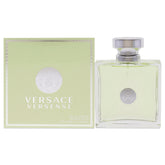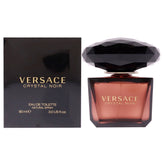What is Fragrance Concentration? Everything You Need to Know
Fragrances have been a part of human culture for centuries, serving as personal identifiers, mood enhancers, and even status symbols. One critical aspect of fragrances that often goes overlooked is their concentration.
What is Fragrance Concentration? (Explained)
Fragrance concentration refers to the percentage of pure perfume oil in a fragrance. The higher the concentration of perfume oil, the stronger and longer-lasting the scent. Understanding these concentrations helps consumers make informed decisions about the products they purchase, ensuring they get the desired intensity and longevity from their fragrance.
Concentration Levels
Eau Fraîche: Contains 1-3% aromatic compounds. It is the lightest concentration and lasts up to 2 hours.
Eau de Cologne (EDC): Contains 2-5% aromatic compounds and lasts up to 2 hours.
Eau de Toilette (EDT): Contains 5-15% aromatic compounds, lasting 3-4 hours.
Eau de Parfum (EDP): Contains 15-20% aromatic compounds, lasting 4-6 hours.
Parfum (Perfume or Extrait): Contains 20-40% aromatic compounds and can last up to 24 hours.
Why is Fragrance Concentration Important?
Longevity and Intensity
The concentration of a fragrance directly impacts its longevity and intensity. Higher concentrations like Parfum last longer and have a stronger scent, while lower concentrations like Eau Fraîche are lighter and dissipate more quickly. This understanding allows consumers to select products that fit their needs, whether they want a long-lasting scent for a formal event or a light, refreshing fragrance for everyday wear.
Cost Efficiency
Fragrance concentration also affects the price. Higher concentrations contain more perfume oil, making them more expensive. However, they also require fewer applications throughout the day, potentially making them more cost-efficient in the long run. Conversely, lower concentrations are less expensive but may need to be reapplied more frequently.
Personalization
Knowing about fragrance concentrations helps in personalizing scent choices. Some individuals prefer strong, lingering scents, while others may opt for subtle, lighter fragrances. This knowledge empowers consumers to choose products that align with their personal preferences and lifestyles.
Types of Fragrance Concentrations
Eau Fraîche
Eau Fraîche, often referred to as a "fresh water”, provides a very light and refreshing scent, which is ideal for those who prefer a subtle fragrance that doesn't overpower. It is perfect for hot climates where a heavy fragrance might be too intense.
Concentration: 1-3%
Longevity: Up to 2 hours
Usage: Ideal for a very light and refreshing scent. Often used in splash products and body mists.
Eau de Cologne (EDC)
Eau de Cologne is known for its fresh and citrusy notes, EDC is popular for its invigorating and crisp scent, which lasts up to two hours. This concentration is often found in aftershaves and body splashes, making it a staple for a quick, refreshing pick-me-up
Concentration: 2-5%
Longevity: Up to 2 hours
Usage: Known for its light, fresh scent. Commonly used in aftershaves and body splashes. Suitable for summer or hot climates.
Eau de Toilette (EDT)
Eau de Toilette strikes a balance between longevity and intensity, typically lasting three to four hours. EDT is versatile and suitable for everyday use, offering a noticeable but not overpowering scent. Its moderate concentration means it provides a lasting scent without being too strong, making it a versatile choice for many fragrance lovers.
Concentration: 5-15%
Longevity: 3-4 hours
Usage: Popular for everyday use due to its balance of intensity and longevity. Great for office wear and daytime activities.
Eau de Parfum (EDP)
Eau de Parfum is more intense and longer-lasting than Eau de Toilette, often richer and more complex. They are ideal for evening wear or special occasions when a stronger, more enduring fragrance is desired. The higher concentration means that only a small amount is needed to make a significant impression, and it often reveals multiple layers of notes as it wears on the skin.
Concentration: 15-20%
Longevity: 4-6 hours
Usage: Suitable for evening wear or special occasions due to its stronger and longer-lasting scent.
Parfum (Perfume or Extrait)
Parfum, also known as pure perfume or extrait ‘extract’, is the most luxurious and expensive type of fragrance. It has a deep, complex scent profile that unfolds beautifully over time.
Concentration: 20-40%
Longevity: Up to 24 hours
Usage: The most concentrated form, used sparingly for special occasions. It offers the richest and longest-lasting scent experience.
Factors Affecting Fragrance Longevity
The type of skin you have can significantly affect how long a fragrance lasts. It is important to choose a fragrance that lasts longer on your skin.
Skin Type (Oily vs. Dry)
Oily skin tends to hold onto fragrances longer because the oils on the skin can trap scent molecules, allowing the fragrance to linger for an extended period.
In contrast, dry skin may cause a fragrance to dissipate more quickly because there are fewer oils to hold onto the scent. To enhance fragrance longevity on dry skin, it is beneficial to use a moisturizer or a matching scented lotion before applying the fragrance.
Climate (Hot vs Cold)
The climate in which you wear a fragrance also plays a crucial role in its performance. In hot climates, fragrances tend to evaporate faster due to the increased body heat, which can intensify the scent but also shorten its lifespan. Therefore, lighter concentrations such as Eau Fraîche or Eau de Cologne are preferable in warmer weather.
Conversely, cold climates slow down the evaporation process, allowing fragrances to last longer. In cooler weather, heavier concentrations like Eau de Parfum or Parfum are more suitable as they can maintain their presence over an extended period.
Application Method
How and where you apply your fragrance can greatly impact its longevity. Applying fragrance to pulse points such as the wrists, neck, behind the ears, and the inside of the elbows can enhance its staying power. These areas are warmer and help to diffuse the scent throughout the day.
Layering fragrances by using matching body products such as lotions, shower gels, and oils can create a more long-lasting effect.
How to Choose Fragrance Concentration?
|
Criteria |
Daily Wear |
Special Occasions |
|
Occasion |
Lighter concentrations like Eau de Toilette or Eau de Cologne |
Heavier concentrations like Eau de Parfum or Parfum |
|
Subtlety |
Subtle and perfect for everyday use |
Designed to leave a lasting impression |
|
Intensity |
Ideal for those who prefer subtle scents |
Ideal for those who prefer strong, bold scents |
|
Longevity |
Requires frequent reapplication |
Lasts longer, perfect for long days or evening events |
|
Cost |
Lower cost, suitable for frequent use |
Higher cost but offers better value over time |
|
Frequency of Use |
Can be used more liberally due to lower concentration |
Less frequent use due to higher concentration and lasting effect |
Conclusion
Knowing the differences between Eau Fraîche, Eau de Cologne, Eau de Toilette, Eau de Parfum, and Parfum, is important to make informed choices that suit your lifestyle, preferences, and budget.
Whether you need a light scent for daily use or a long-lasting fragrance for special occasions, this guide will help you choose the right perfume with confidence.


















Leave a comment
Please note, comments need to be approved before they are published.